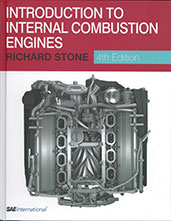Technical Paper
Cold Start Particulate Emissions from a Second Generation DI Gasoline Engine
2007-07-23
2007-01-1931
Spray guided Direct Injection Gasoline Engines are a key enabler to reducing CO2 emissions and improving the fuel economy of light duty vehicles. Particulate emissions from these engines have been shown to be lower than from first generation direct injection gasoline engines, but they may still be significantly higher than port fuel injected engines due to the reduced time available for mixture preparation and increased incidence of fuel impingement on the piston crown and combustion chamber surfaces. These factors are particularly severe in the period following a cold start. Both nuclei and accumulation mode particle size and number concentration were measured using a Cambustion differential mobility spectrometer. These data are reported for different coolant temperature intervals during the warm-up period. The bulk composition was determined using thermo-gravimetric analysis, and PM mass fractions are given for different volatility ranges and for elemental carbon.

